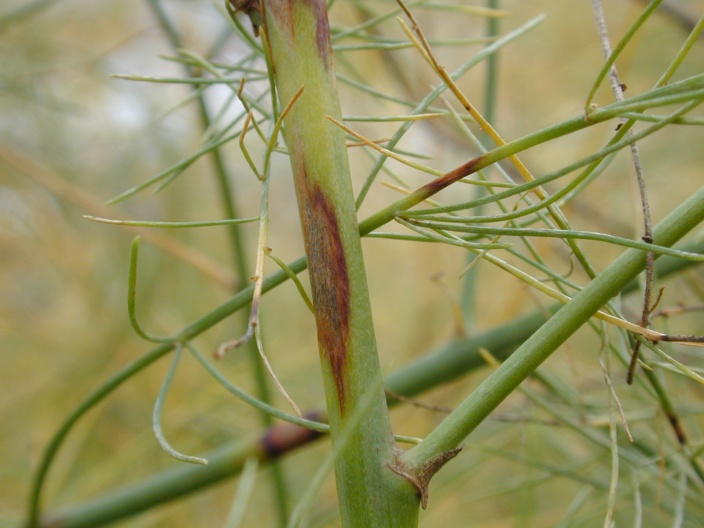Cercospora Blight of Asparagus
 Causal Agent
Causal Agent
Cercospora asparagi
Hosts
Asparagus
Symptoms
First appear on lower portions of the ferns after row closure and periods of high humidity. Symptoms are small, oval, gray to tan lesions (spots) with reddish brown borders on the needles and small branches. Spores of the fungus are produced on the lesions and are dispersed by wind and rain. Development of the disease depends on rainfall and humidity levels during June to August. Browning progresses upward from the lower ferns as conditions favor spread of the disease. Entire ferns may be blighted by late July in a wet year. The disease results in reduced photosynthesis of affected ferns. Yield loss the following spring is a result of reduced crown vigor caused by the early defoliation. Repeated yearly defoliation by Cercospora blight weakens crowns and reduces stand productivity and longevity. First-year asparagus is rarely affected by Cercospora blight.
Control
An integrated approach is recommended for management of Cercospora blight. Implementation of several cultural practices will help provide partial control. Schedule overhead irrigations to allow thorough drying of the foliage before nightfall, or use drip or furrow irrigation to keep foliage dry. In eastern Oklahoma, utilization of a wider row spacing of six feet rather than five will increase the air movement to dry foliage and delay canopy closure. Rows should also be planted in a north-south direction to take advantage of prevailing southerly winds in drying foliage. Research has shown that burning, but not tillage, of infested residue in the spring delays blight appearance by about one week. However, asparagus residue left on the soil is beneficial for reducing soil erosion, abrasion of emerging spears by wind-blown sand, and for maintaining organic matter content of soil. Foliar applications of a fungicide recommended for control of Cercospora blight provide excellent control. Please contact your local county extension office for current information.
